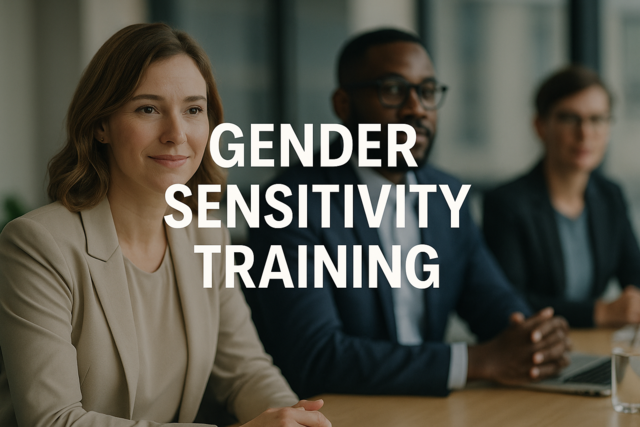The business world is full of change and competition, and it's necessary to continue to develop to stay on top of your game. Procurement management is not exempt and the ability to adapt to those changes is a valuable weapon to have in your arsenal. Another that is likely to be equally valuable is strategy. Even when things are not in a state of flux, procurement development strategies can provide a necessary overhaul to how things are done and give the company a nice cushion for future difficulties. This article will explore how you can develop an effective procurement strategy and examples of some that are commonly used in the field today.
Why Develop a Procurement Strategy?
Developing procurement strategies involves more than just slapping together a few ideas and hoping it will work out. Most of the time there needs to be some careful research into the existing state of the market and the current procurement methods, amongst other data sources. Like with the procurement process, it can take a lot of effort to make it work and shouldn't be something that is taken lightly. The first strategies that you come up with may not work and may need a revision or two before they actually have any effect, which is perfectly fine.
When you're developing your procurement strategies, keep in mind a few of the following:
-
Is It Realistic?--Is the strategy something that can actually be done under normal circumstances? A fantastic strategy isn't going to get you very far if it isn't realistic or feasible. Take into consideration the practicality of a proposed strategy and be open to any needed adjustments before it is implemented.
-
Limited or Multi-Use?--How many times can this strategy be used? A one-time strategy may be needed in certain situations but this shouldn't be the case all the time. If possible, try to keep any procurement strategies you create as universal as possible so they can be used to their fullest extent.
-
Are You Fully Using Resources?--Are you able to properly incorporate your resources into your strategies? Things like your suppliers are what you are going to be using the strategy with, so it makes perfect sense to have those resources included in the development process. Apply your resources where appropriate and don't discount the value that they can have to your strategy.
-
Is It Relevant?--One of the reasons why you need to look at the current state of the market or the business' industry is to make sure that your strategy is relevant to the times. You can't do much with a brilliant flawless strategy if it's designed for the economy of five years ago and not for today's economy. The same goes for the business that you're procuring for; if it doesn't fit, then it's basically useless to you.
These four elements should be applied to any strategies that you come up with and should be kept in mind as you make any adjustments to existing procurement strategies. The development process for procurement strategies goes as such:
-
Examine Current Situations--First identify all of the elements present in the current situation(s). Look at the state of the business you're procuring for, your procurement practices, goals and objectives, past performance, and the existing state of the market or economy. There's going to be relevant information in all of those places that can help out in development, especially if there are problems that you are hoping to overcome with the help of the strategy or strategies you're creating. Information from those areas can also provide ideas for strategies (or parts of strategies) and/or goals.
-
Identify Relevant Players--Who is going to be responsible for implementing the strategy, and/or who is going to be affected by it? The people who are involved with the strategy's usage are another element that you need to pay attention to. It's likely that they will play some kind of role in the strategy so it's unwise to discount them. This includes members of the procurement team, suppliers/vendors, and staff of the business that work with the procurement staff. Identifying them makes it easier to properly include them in the process and to avoid accidentally excluding someone.
-
Identify Goals and Priorities--There's an objective attached to each strategy detailing what it is that you want to accomplish. It's why you're using the strategy in the first place and it's a key part of the development process. To develop an effective strategy, you need to identify what goals and priorities are involved--and not just those related to procurement! Consider what goals and priorities that the business or company has and how they compare to the procurement team's goals and priorities. The focus should be kept on how the two sets of goals can work together rather than against one another without overly compromising either one. Not only is this going to help make sure that the strategy is in line with other practices, but it can nip future conflicts in the bud right away.
-
Brainstorm--Once you know what you're working with and what basic elements are involved, you can start thinking of potential strategies. Brainstorm as many ideas as you can and then go through them to identify the ones that are feasible or can be useful. Whatever you choose can be polished up into a working, effective procurement strategy, but you can't progress if you haven't come up with anything. Remember to take into account as much relevant information as possible and keep in in mind the four elements discussed earlier when brainstorming to the best of your ability.
-
Consulting and Input--Just because you came up with the strategy doesn't mean that it is going to be perfect and without issue. Consulting with others and getting their input can help identify any flaws and find solutions to improve the strategy into something functional. Those same relevant players mentioned earlier are going to want to have a say in the process and this is the point where you can invite them to do so. At minimum, the members of the procurement team should be allowed to offer their input. Since the business or company you're procuring for are going to be directly impacted by the strategies you create and their outcomes, they should also be consulted and given the chance to offer any suggestions.
-
Integration of Plans--Once you have a feasible strategy and you've tidied it up as much as you can, you can then begin to implement it. Look at your existing procurement practices to determine where and when the plan can be integrated. It's better to introduce a new strategy at a point where it can be controlled and monitored, as inserting a new element into something that is already in progress can disrupt what is already working and create unnecessary complications. Planning out the integration of a new strategy can also help identify any existing issues that could potentially create a negative impact on the strategy's effectiveness. By not immediately putting the strategy to use, you're giving yourself the time to find a solution to those issues.
-
Monitoring and Evaluation--When the strategy is implemented and is fully put to use, it should be monitored in order to properly evaluate its effectiveness. This allows you to identify if the strategy is actually having the effect that it is intended to have. It's not just positive effects that you want to look for either, as the negative ones can be measured and be just as impactful. Also don't only look at the major changes like growth, demand, and efficiency, but consider the minor changes like in communication and with the relationships between buyers and sellers. It's possible to have a strategy be successful even when that success is on a small scale.
While you're free to create your own procurement strategies using the development process listed above, there are a few tried and true strategies that you can use. They can be customized or adjusted to meet your needs and goals, as can any strategy you intend to use. Some of the more common ones that are frequently in use today include:
-
Optimize Resources and Sources--The simplest strategy that gets repeated use is to optimize the things that you already have at your disposal. This means evaluating your current resources and how you've been using them thus far. Think about other options for how you can use those resources or if there's something that your resources can get you access to. It's understandable if your procurement efforts are not improving or not as great as they can be if you're not using your resources to their fullest. Your suppliers and vendors are also considered resources and you should try to get the most out of your relationship with them. If there's a way to manage them in a way that is mutually beneficial and you're not getting those benefits, then you need to make a change.
-
Total Quality Methods (TQM)--TQM is another strategy that involves vendors and suppliers. It requires vendors who provide a quality service to their buyers and avoid any errors or mistakes in their work. For procurement teams, this means applying the best purchasing practices and working with the suppliers who are of a high quality for the sake of your own benefit.9 TQM requires you, as the procurement officer, to be a smarter shopper so to speak when you go in search of a supplier. You're basically putting in your best effort to get the best results through your vendors.
-
Risk Management--As a strategy, risk management involves the procurement team's awareness of problems that can arise throughout the supply chain and their ability to prevent or avoid those problems. Most of the time, this means looking at the situation, identifying the risks, and coming up with solutions to potential problems before they happen. As there are quite a few problems that can arise outside of your control, like those caused by natural disasters, so being as prepared as possible for a worst-case scenario can be a very effective strategy.
-
Global Sourcing--Global sourcing is a strategy that is used by large international companies than smaller localized businesses. Basically, it takes into account the resources that are available throughout the world and address the businesses present in the global market. It increases what you have access to and puts you on better footing with international competitors. You do have to have that global presence in order for this to work, so it's not a strategy for everyone.
-
Green or Sustainable Purchasing--Like global sourcing, this strategy is better for certain groups. In this case, green or sustainable purchasing is a strategy that is in use more so by governments than the average business, although there are private companies that have used it before. It involves taking a more eco-friendly approach towards procurement by purchasing products that are considered "green" or otherwise have a less negative environmental impact. There's also a focus on waste reduction and recycling, but on a large scale and throughout the procurement team's actions.
























